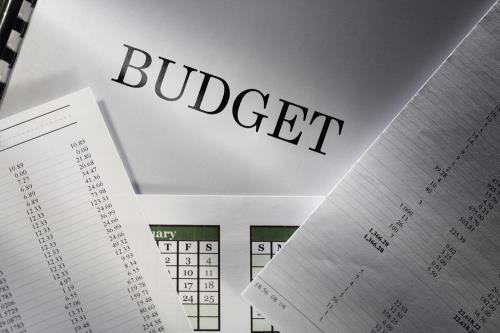22 Jan 2022

By Mark Richards,
Now the dust has settled on last month’s Budget, it seems a good time to assess what it all means for schools.
It is fair to say that the Budget was probably more generous towards schools than many had expected. Many headteachers had been quick to mention that education had barely been mentioned in the Spring Budget, so any news of a funding boost to schools will have come as a relief.
However, although Rishi Sunak’s latest Budget may have pleasantly surprised many in its generosity, it certainly still fell well short of the ambitions and expectations of prominent figures, such as the former Education Recovery Tsar – who, of course, resigned earlier this year in disgust at how far below the necessary funding level was for the government’s Covid catch-up plans.
And - as is always the case with such matters - the devil really is in the detail. You need to go beyond the headline figures and soundbites to see the details buried in Treasury documents. This is where the less appealing small print is often found.
Sunak announced in the Budget that a further £2 billion would be added to the Covid recovery pot – bringing the total to a figure approaching £5 billion. The Chancellor also laid out plans to for schools to get extra funding that would ensure that per-pupil funding would be restored to 2010 levels (in real terms) by 2024-25.
However, when you consider that the outgoing Education Recovery Tsar, Sir Kevan Collins, had been pushing for £15 billion in Covid catch-up funding, the argument that funding is still a long way short of what is needed seems a strong one.
£1 billion of the funding announced in the Budget is essentially a continuation of the existing recovery premium. The existing premium is worth approximately £6,000 to the average primary school and around £22,000 to the average secondary school. Primaries will receive the same funding up to and including 2023-24. However, the allowances for secondary schools will almost double.
However, it was certainly not all good news for schools in the Budget. As many headteachers had feared, schools will be expected to fund teacher pay rises from their own budgets. Not only that, a pledge to raise starting salaries to £30,000 by September 2022 appears to have been reneged on by the government, with the Treasury announcing that this would now be introduced by the end of this Parliament.
Furthermore, and increasing the burden on school budgets, the Treasury also announced that schools will need to use the additional funding pledged in the Budget to cover the increased cost of National Insurance contributions. These are set to rise by 1.25% from April 2022.
Other headlines from the Budget included new funding to cover the cost of creating 30,000 new high-quality funding for pupils with SEND. Additionally, there are also plans to invest £150 million in training for early years staff.
RELATED POSTS
1. How will schools cope with budget squeezes?
2. Budget Cuts: So Long, Teacher Assistants?
3. Should parents subsidise school budgets?
4. Real World Budget Cuts. Should Teachers Strike?
5. Why teacher pay should not be frozen
We encourage our readers to share their knowledge.
Do you have an idea, view, opinion or suggestion which would interest others in the education sector?
Are you a writer? Would you like to write and have your article published on The Educator?
If you are connected with the education sector or would like to express your views, opinion on something required policymakers’ attention, please feel free to send your contents to editorial@theeducator.com